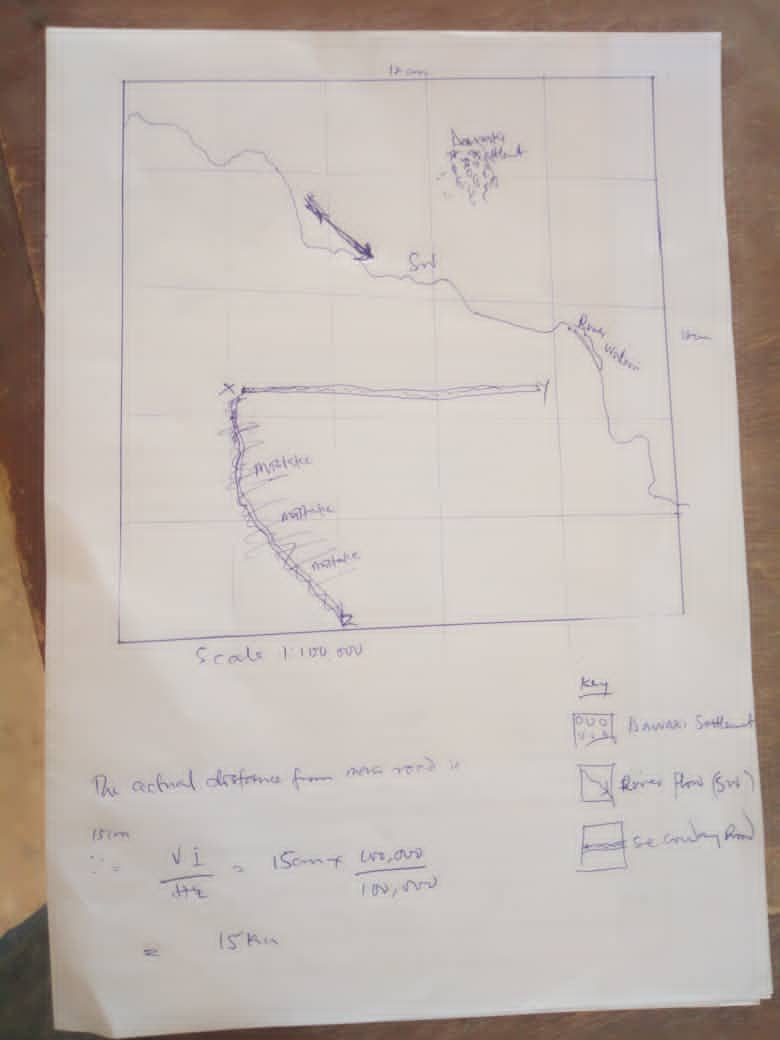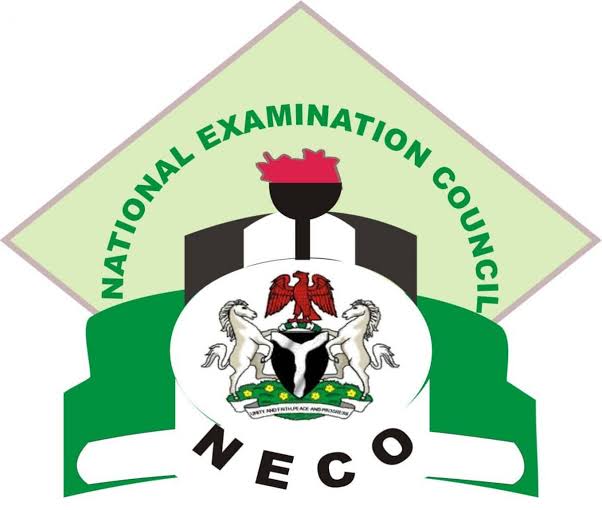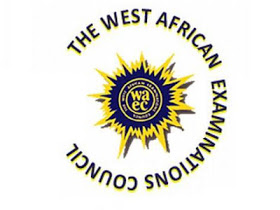NECO-2021-Geography-Practical/Physical-Solution Answer - July/August Expos
WELCOME TO AYOSTUFFS BEST EXAM EVER
==================================
KEEP REFRESH THIS PAGE IN EVERY 5MIN
==================================
NECO 2021 OBJECTIVE AND PRACTICAL/PHYSICAL GEOGRAPHY MIDNIGHT ANSWERS
GEOGRAPHY OBJ
1-10: CCEADCBCCB
11-20: DEDADCADED
21-30: EDCDCCDACC
31-40: CACBCDCCBA
41-50: CBDBBBDBEA
51-60: EDBAAABDAC
(1)
1bii
*Relief* the land is on a backwoods it is suitable for human settlement and establishments of mining other social - cultural features like schools, markets, mosques and roads.
*Drainage* this refers to water bodies like rivers and lakes. They can either get water by government water protects or boreholes sunk by individuals.
1biii
Likely occupation of the people are
i. Agriculture
ii Fishing
iii Lumbering
====================================
(2ai)
Great circle:
Great circle is any line that divides the earth into equal halves or hemisphere. The centre of the Great circle is also the centre of the earth. The shortest distance between any two points on the earth 's surface lies along the circumference of the great circle which passes these points . The Great circle route is often used by aircraft on a long distance journey eg Polar air route between London and Los Angeles over Greenland.
(2aii)
International date line:
International date line is where the date changes by exactly one day(24 hours) when it is crossed. There is a difference of one whole day (24hours) on both sides of longitude 180° . So, the 180° meridian represents theoretically ,a date line. The international date line is not straight for it avoids cutting across islands to prevent confusion in days and dates in the tiny islands.
(2aiii)
Time zone:
Time zone is the division of the world into twenty four (24)time zone, each of which differ from the next zone by 15° in longitude or 1hour in time. The local time of the central meridian for each zone is applied to that zone which is called a time zone. All places located on the same time zone have the same time.
.(2aiv)
Prime meridian:
prime meridian is the line of 0° longitude, the starting point for measuring distance both east and west around the Earth. The prime meridian is arbitrary, meaning it could be chosen to be anywhere. The prime meridian separates the eastern hemisphere from the western hemisphere.
(2b)
(Pick any Four)
(i)Parallels are lines of latitudes WHILE Meridians are lines of longitude
(ii)Parallels are drawn from west to east WHILE Meridians are drawn from north to south
(iii)Parallels never meet WHILE Meridians meet at the poles.
(iv)Parallels have different lengths(circumstances) WHILE Meridians have equal length
(v)Parallels are used to calculate distance WHILE Meridian are used to calculate time
(vi)Parallels are marked 0°- 90° North and South of the equator WHILE Meridians are marked 0°- 180° East and West of the Greenwich
===================================
(3ai)
Mechanically Formed Sedimentary Rocks: These are rocks which are formed as a result of the action of water wind and ice. The following rocks are the results of the action of water which include clays, gravel and aluminum. Those that result from the action of ice are moraine, boulder and gravel.
(3aii)
Organically Formed Sedimentary Rocks: These are rocks which are formed from the remains of plants and animals. Some of the notable rocks formed by the remains of animals are chalk and corals. Those that result from plants include peat and lignite.
(3aiii)
Chemically Formed Sedimentary Rocks: These are rocks which results from chemical composition. The major rocks formed include Borax, gypsium.
(3b)
(i) These rocks are resistance to erosion.
(ii) They occur in strata or layers.
(iii) They contain fossils of plants and animals.
(iv) They are non-crystalline in nature
====================================
(4a)
Temperature and precipitation
(4b)
-MERITS-
(i) It can be adapted for use at different educational levels
(ii) It stresses the link between vegetation and soils
(iii) It makes use of temperature and preciptation figures
-DEMERITS-
(i) It's more descriptive and generalized with ignoring local and causative factors.
(ii) It neglected air masses
(iii) It is empirical and, therefore, is based on facts and observations
(4c)
(i) A – Tropical Moist Climates (average temperature above 18⁰C in all months)
(ii) Aw – precipitation in driest month less than 60 mm and less than 100 – (r/25)
(iii) C – Moist Mid-Latitude Climates with Mild Winters
(iv) E – Polar Climates (extremely cold summers and winters)
====================================
(7a)
The ozone layer is a natural layer of gas in the upper atmosphere that protects humans and other living things from harmful ultraviolet (UV) radiation from the sun.
(7bi)
Help to reduce temperature: Consequently, decreased ozone in the stratosphere results in lower temperatures.
(7bii)
Protection from harmful ultra violet rays and radiation: The ozone layer protects us from harmful UV rays that can have serious effects on biodiversity, animals and people’s health, including skin cancer and eye cataract.
(7biii)
Absorption of pollutants: The stratospheric layer which occupy the lower part of the atmosphere removes the unwanted pollutants from the earth’s surface.
(7c)
(i) Unregulated Rocket Launches
(ii) Chlorofluorocarbons
====================================
(8a)
Geographical data refers to data and information that has explicit or implicit association with a location relative to Earth.
(8bi)
Vector data file: These data are created by digitizing the base data. They store information in x, y coordinates. Vectors models are used to store data, which have discrete boundaries like country borders, land parcels and roads. Vector models are useful for storing data that has discrete boundaries, such as country borders, land parcels, and streets.
(8bii)
Raster Data file: Raster data stores information of features in cell-based manner. Satellite images, photogrammetry and scanned maps are all raster-based data. Raster models are used to store data, which varies continuously as in aerial photography, a satellite image or elevation values
(8biii)
Geographic database: Geographic databases can store more complex elements needed to describe the world and the roads or buildings built upon it. The basic data element is the point that is the combination of the longitude, latitude, and sometimes the altitude.
(8biv)
Multi temporal data; These are data generally used for change detection. It attaches a time component to information
(8ci)
(i)Topo maps
(ii)Aerial photographs
(iii)Satellite images
(8cii)
(i)It helps to analyze urban growth and the direction of expansion.
(ii)It plays a vital for conserving natural resources and protecting the environment
(iii)It plays an essential role in planning, organizing, and decision making in the banking industry
===================================
Completed!
NOTES AYOSTUFFS.BLOGSPOT.COM SEND ALL ANSWER
EXPOS EARLIER THAN OTHERS





Comments
Post a Comment